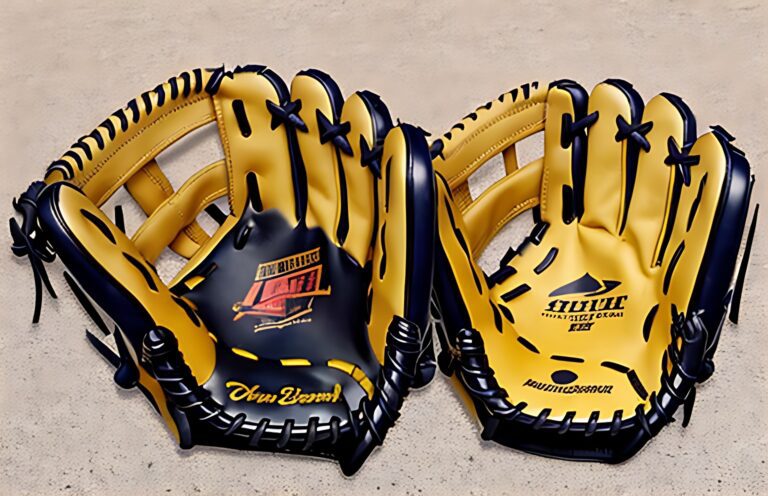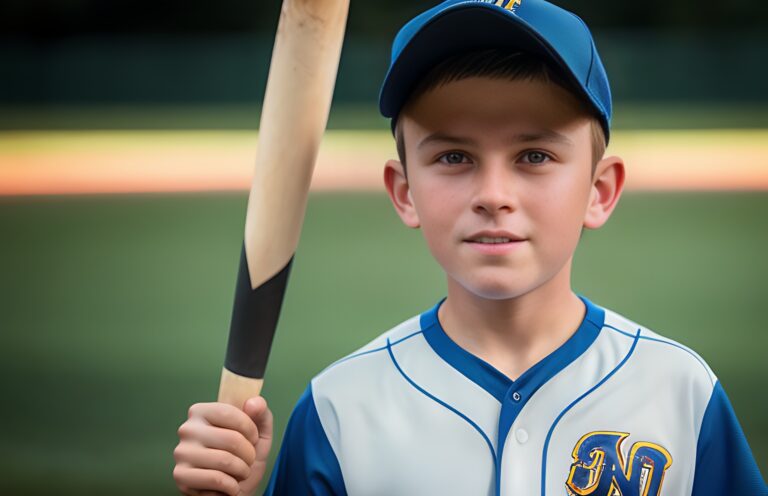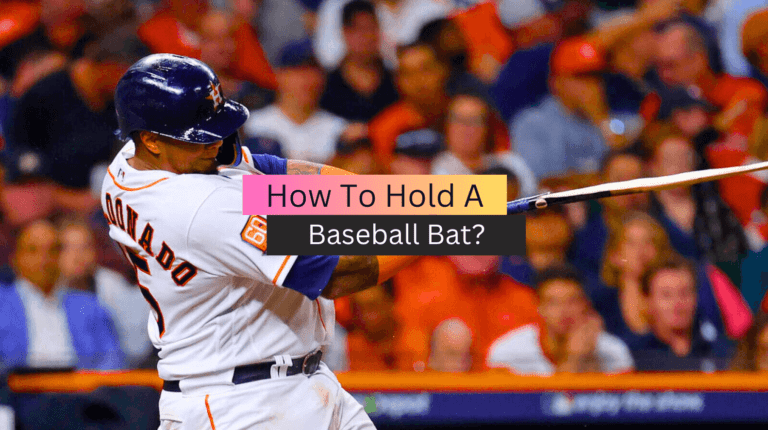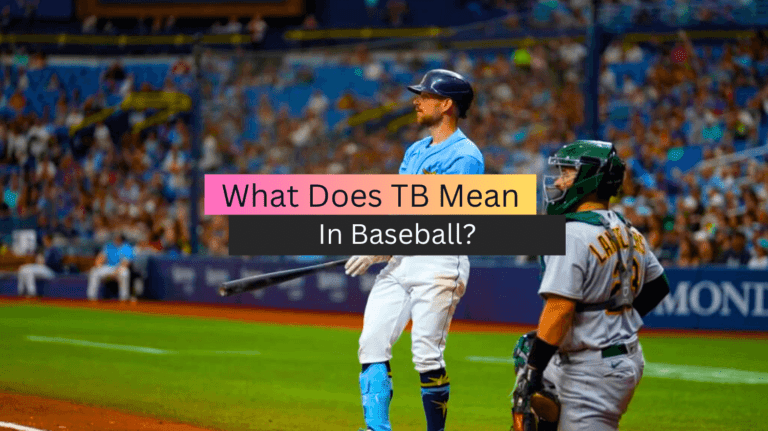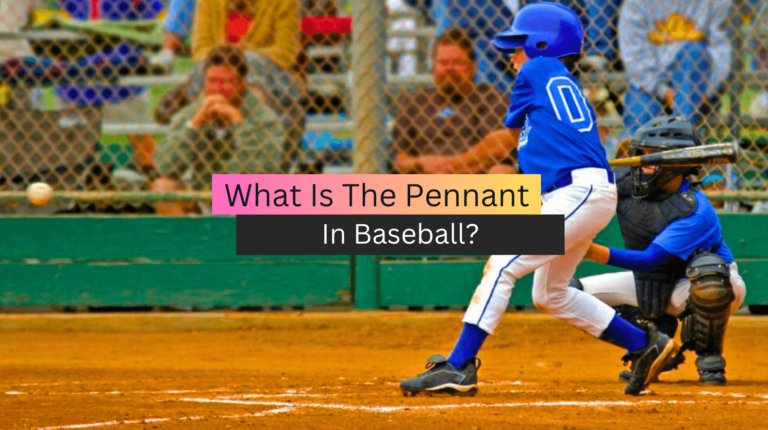What is the Difference Between Softball and Baseball Cleats?
Have you ever wondered about the difference between softball and baseball cleats? Despite the seeming similarity, choosing the wrong one could drastically impact your game performance and even lead to potential injuries.
Every time you step on the field, you expect to perform at your best. Yet, you may have felt unsteady, slipped, or struggled to pivot quickly. It’s a frustration that can undermine your performance and confidence.
Don’t worry; this article is here to help! We’ll delve into “What is the Difference Between Softball and Baseball Cleats?” to help you understand the distinctive design features and performance benefits of each. By gaining this knowledge, you can confidently select the right cleats for your sport, maximize your performance, and keep yourself injury-free. Stay tuned!
See Also: best molded baseball cleats
Understanding the Basics: Baseball Cleats
When it comes to baseball, every little detail counts. From the crack of the bat to the lightning-quick plays in the field, players need every advantage they can get. That’s where baseball cleats step up to the plate.
The MVPs of the Diamond
Baseball cleats are the unsung heroes of the diamond. They are specifically designed to provide players with the traction and stability they need to make those game-changing plays. These shoes are the ultimate game-changers, offering a winning combination of performance and style.
A Closer Look at the Lineup
So, what makes baseball cleats so special? Let’s break it down, shall we?
Spikes that Dig Deep
One of the defining features of baseball cleats is their spikes. These spikes are strategically positioned on the sole of the shoe to dig deep into the dirt, providing a superior grip and preventing slippage on the field. It’s like having your own personal grappling hooks for the baseball diamond!
A Perfect Fit for the Diamond Dance
Baseball cleats are designed with precision to ensure a snug and comfortable fit. They often feature a lace-up design that allows players to customize the tightness, providing the perfect balance between support and flexibility. It’s like having a tailor-made shoe that knows all your moves.
Built to Handle the Heat
Playing baseball means spending long hours under the scorching sun. That’s why baseball cleats are built to withstand the heat. They are made from durable materials that can take a beating, ensuring they last through countless innings and seasons. These cleats are in it for the long haul.
Traction is the Name of the Game
Baseball cleats are all about traction. They come with specialized patterns on the outsole that are designed to provide maximum grip on grass and dirt surfaces. Whether you’re sprinting towards a fly ball or making a quick pivot to turn a double play, these cleats will keep you grounded and ready for action.
Performance and Style, a Winning Combo
Last but not least, baseball cleats offer a winning combination of performance and style. They come in a variety of designs, colors, and brands, allowing players to express their unique personalities while dominating on the field. After all, who says you can’t look good while making those jaw-dropping plays?
Step Up to the Plate
Now that you have a better understanding of baseball cleats, it’s time to step up to the plate and choose the perfect pair. These game-changing shoes will not only elevate your performance but also make you feel like a true MVP on the diamond. So lace ’em up, dig in your spikes, and get ready to unleash your full potential with baseball cleats that are designed to make you shine.
See Also: best under armour baseball cleats
Breaking It Down: Softball Cleats
When it comes to softball, it’s all about speed, agility, and crushing those home runs. And guess what? The right pair of softball cleats can take your game to a whole new level. Get ready to dive into the world of softball cleats and discover what sets them apart.
Unleashing the Powerhouse
Softball cleats are the secret weapon that every player needs. Designed specifically for the unique demands of the sport, these cleats offer a winning combination of comfort, flexibility, and performance. It’s time to break it down and find out why softball cleats are a force to be reckoned with.
The Perfect Fit for the Diamond Divas
Softball cleats are all about providing a perfect fit for the diamond divas. These shoes are crafted with precision, offering a snug and supportive feel that allows players to move with agility and confidence. Whether you’re making lightning-quick sprints or sliding into home plate, softball cleats will keep you comfortable and in control.
Flexibility for Those Jaw-Dropping Moves
In softball, flexibility is key. That’s why softball cleats are designed to provide the right balance between support and flexibility. They allow players to make those jaw-dropping moves with ease, whether it’s pivoting on a dime to make a play in the field or generating explosive power at the plate. With softball cleats, you’ll have the freedom to unleash your full potential.
Comfort, Comfort, Comfort
Playing softball means spending long hours on your feet. That’s why softball cleats prioritize comfort. They are equipped with cushioning and padding in all the right places to minimize fatigue and keep you feeling fresh throughout the game. Say goodbye to sore feet and hello to pure comfort on the diamond.
Tackling the Turf
Unlike baseball, softball is often played on both grass and turf surfaces. That’s why softball cleats are designed to handle the unique challenges of different playing surfaces. They come with specialized outsoles that provide excellent traction on grass, dirt, and even artificial turf. No matter where the game takes you, softball cleats will keep you grounded and ready to make those game-changing plays.
Style that Makes a Statement
Softball cleats not only excel in performance but also make a style statement. They come in a variety of vibrant colors and sleek designs, allowing players to showcase their personality and stand out on the field. With softball cleats, you can look good and play even better.
Elevate Your Game with Softball Cleats
Now that you have a closer look at softball cleats, it’s time to elevate your game to new heights. These shoes are designed to enhance your speed, agility, and overall performance on the diamond. So lace them up, get ready to dominate the game, and unleash your inner powerhouse with softball cleats that are made for champions.
See Also: best baseball cleats for Severs disease
Playing Surface Matters: Differences in Cleat Types
When it comes to baseball and softball, the playing surface can vary greatly. From well-groomed grass to artificial turf, each surface poses its own challenges. That’s why the type of cleats you choose can make a world of difference in your performance. Let’s dive into the world of cleat types and discover why playing surface matters.
A Cleat for Every Surface
Just as players have different skills and positions, cleats also come in various types to suit different playing surfaces. Whether you’re playing on grass, dirt, or turf, there’s a cleat out there designed to provide you with the best traction and stability.
Grass Fields: Digging Deep with Spikes
For traditional grass fields, spiked cleats are the go-to choice. These cleats feature protruding spikes on the outsole that dig deep into the ground, providing excellent grip and preventing slippage. Whether you’re sprinting in the outfield or making quick cuts on the basepaths, spiked cleats will keep you firmly planted, allowing you to maximize your performance.
Dirt Fields: Navigating the Infield
Dirt fields pose their own set of challenges, especially in the infield where quick movements and sharp turns are necessary. Metal cleats are often preferred on dirt fields because they offer superior traction. The metal spikes sink into the dirt, providing stability and allowing players to make precise movements without losing their footing.
Turf Fields: Tackling the Artificial Surface
Artificial turf has become increasingly popular in both baseball and softball. Turf fields are known for their consistent and fast-playing surface. To tackle turf fields, players can opt for turf shoes or molded cleats. Turf shoes have a rubber outsole with small, nub-like patterns that provide traction without damaging the artificial turf. Molded cleats, on the other hand, have rubber or plastic studs that offer grip on turf surfaces, allowing players to move swiftly and confidently.
Versatility for All Surfaces
If you play on a variety of surfaces or are unsure of what to expect, multi-purpose cleats can be a great option. These cleats feature a hybrid design that combines the benefits of different cleat types. They typically have a mix of removable metal or plastic spikes and rubber studs, giving players the flexibility to adapt to various playing surfaces.
Choose Wisely, Perform Powerfully
The playing surface has a significant impact on your game, and selecting the right cleat type is essential. By understanding the differences in cleat types and considering the playing surface you’ll encounter, you can optimize your performance and play your best game. So, choose wisely, suit up with the appropriate cleats, and get ready to conquer any playing surface that comes your way.
See Also: best baseball cleats for ankle support
Safety First: Cleats and Injury Prevention
In the game of baseball and softball, safety should always be a top priority. While cleats are designed to enhance performance, they also play a crucial role in injury prevention. Let’s delve into the world of cleats and discover how they contribute to keeping players safe on the field.
The Cleat Connection to Lower Body Injuries
Lower body injuries, such as ankle sprains, foot fractures, and knee strains, are common in baseball and softball. Cleats can be a game-changer when it comes to reducing the risk of these injuries. They provide stability, support, and traction, keeping players grounded and minimizing the chances of slipping or twisting during high-intensity movements.
Cleat Features for Injury Prevention
Cleats are packed with features designed specifically to prevent injuries. Here are a few key features to look out for:
- 1. Ankle Support: Many cleats come with a higher cut or additional ankle padding to provide extra support and stability. This helps prevent ankle rolls and sprains, which can put a player out of the game for weeks or even months.
- 2. Cushioning and Impact Absorption: Cleats with ample cushioning and shock-absorbing materials help reduce the impact on the feet and lower body. This not only enhances comfort but also minimizes the risk of stress-related injuries, such as shin splints or stress fractures.
- 3. Traction and Outsole Design: The traction pattern and outsole design of cleats play a crucial role in injury prevention. Cleats with well-designed patterns and materials offer superior grip on various playing surfaces, preventing slips and fall that can lead to injuries.
- 4. Reinforced Toe Cap: Some cleats feature a reinforced toe cap, which adds an extra layer of protection to the front of the foot. This can be particularly beneficial for players who often find themselves in situations where their feet are at risk of being stepped on or struck by a ball.
Customizing for Safety
In addition to the built-in safety features, customization options allow players to further enhance the safety aspect of their cleats. Orthotic inserts or custom insoles can provide additional arch support and improve alignment, reducing the risk of overuse injuries. Moreover, adding ankle braces or taping techniques can offer extra stability and protection for players with a history of ankle issues.
Proper Cleat Maintenance
Ensuring that your cleats are in good condition is also important for injury prevention. Regularly inspect your cleats for wear and tear, and replace them when necessary. Keep the cleats clean and dry to maintain their traction and grip. Proper care and maintenance not only extend the lifespan of the cleats but also ensure that they continue to provide the support and safety required on the field.
Striving for Safe Play
In baseball and softball, safety should never be compromised. By choosing cleats with the right features, customizing them to your needs, and properly maintaining them, you can minimize the risk of lower body injuries and keep yourself in the game. Remember, it’s not just about performance; it’s about playing safely and ensuring that you’re able to enjoy the game for years to come.
See Also: best baseball cleats for flat feet
Factors to Consider When Buying Cleats
When it’s time to gear up for the game, one of the most important decisions you’ll make is choosing the right cleats. With so many options available, it’s crucial to consider various factors to ensure you make the best choice. Let’s explore the key factors to consider when buying cleats and make a decision that will elevate your game to new heights.
The Playing Surface Puzzle
First and foremost, consider the playing surface you’ll encounter most frequently. Different surfaces require different types of cleats for optimal performance. Assess whether you’ll be playing on grass, dirt, turf, or a combination of surfaces. This knowledge will guide you in selecting the appropriate cleat type to maximize traction and stability.
Cleat Type and Design
Cleats come in different styles, including low-top, mid-top, and high-top variations. Each design offers a unique combination of ankle support, flexibility, and mobility. Consider your playing position and personal preference to determine which design suits you best. For added ankle support, opt for mid-top or high-top cleats, while low-top cleats offer increased mobility and a lightweight feel.
Fit and Comfort
Never underestimate the importance of a proper fit and comfort when it comes to cleats. Ill-fitting or uncomfortable cleats can hinder your performance and potentially lead to foot-related issues. Ensure that the cleats fit snugly but not too tight, allowing for natural movement while providing ample support. Consider trying on different brands and sizes to find the perfect fit that keeps you comfortable throughout the game.
See also: Do Baseball Players Wear Cleats
Durability and Quality
Cleats take a beating on the field, so durability and quality are paramount. Look for cleats made from high-quality materials that can withstand the demands of the game. Pay attention to the stitching, construction, and overall craftsmanship. A durable pair of cleats will not only last longer but also provide the stability and support you need for seasons to come.
Traction and Grip
Traction is a game-changer on the field, and cleats play a crucial role in providing grip. Examine the outsole of the cleats and the pattern of the studs or spikes. Ensure they are designed to provide maximum traction on the specific playing surfaces you’ll encounter. Look for cleats with strategically placed studs or spikes that dig deep into the ground, offering superior grip and preventing slips.
Style and Personal Expression
While performance should be the primary consideration, there’s no harm in choosing cleats that reflect your personal style and make you feel confident. Cleats come in a wide array of colors, designs, and brands. Find a pair that resonates with your personality and makes you stand out on the field. Remember, when you look good, you feel good, and that extra boost of confidence can make a difference in your performance.
Budget Considerations
Last but not least, consider your budget when buying cleats. Cleats range in price, and while investing in a quality pair is advisable, it’s essential to find a balance that fits your financial situation. Consider the durability, features, and performance benefits when comparing prices to make an informed decision.
The Perfect Cleat Match
Choosing the right cleats is like finding the missing piece of the puzzle for your game. By considering factors such as playing surface, cleat type, fit, durability, traction, style, and budget, you can make a wise decision that enhances your performance and brings out your best on the field. So, choose wisely, step into your new cleats with confidence, and get ready to take your game to the next level.
See Also: best baseball turf shoes
Conclusion
In conclusion, while both softball and baseball cleats share the purpose of providing traction and stability on the field, there are a few key differences that set them apart. Softball cleats typically have a wider and flatter outsole, designed to provide better traction on the dirt and grass surfaces commonly found in softball fields. They also feature more cushioning and flexibility to accommodate the unique movements involved in softball.
On the other hand, baseball cleats often have a narrower and more aggressive cleat pattern, suitable for the harder and more compact surfaces found on baseball fields. They also prioritize ankle support and stability, given the high-speed running and sudden directional changes associated with baseball.
So, whether you’re a softball player or a baseball enthusiast, choosing the right cleats tailored to the specific demands of your sport is crucial for maximizing your performance and enjoying the game to the fullest. Now, go out there, cleat up, and make every stride count!
FAQs
Are baseball and softball cleats the same?
No, baseball and softball cleats are not the same. While they serve the same purpose of providing traction and stability on the field, there are key differences between them. Softball cleats have a wider and flatter outsole for better traction on dirt and grass surfaces, while baseball cleats often have a narrower and more aggressive cleat pattern for harder and more compact surfaces.
Additionally, softball cleats offer more cushioning and flexibility to accommodate the unique movements in softball, whereas baseball cleats prioritize ankle support and stability for high-speed running and sudden directional changes in baseball.
What is the difference between softball and baseball?
Softball and baseball have several key differences. The most noticeable difference is the size of the ball used. Softballs are larger and heavier than baseballs. The playing field dimensions also vary, with softball fields typically being smaller. Another difference lies in the pitching style.
Softball pitchers throw underhand, while baseball pitchers throw overhand. The number of players on the field differs as well, with softball teams typically consisting of 10 players, whereas baseball teams have 9 players. Additionally, the rules and strategies of the two sports vary, contributing to distinct gameplay experiences.
Are all soccer cleats the same?
No, all soccer cleats are not the same. There are various types of soccer cleats designed for different playing surfaces and player preferences. Firm ground (FG) cleats have molded studs for natural grass fields, while soft ground (SG) cleats have longer, detachable studs for wet or muddy conditions. Artificial grass (AG) cleats have shorter, evenly distributed studs for synthetic turf.
Indoor (IN) cleats have a flat, non-marking sole for indoor courts, and turf (TF) cleats have small, rubber studs for artificial turf. Additionally, there are variations in cleat materials, fit, and design features that cater to individual player needs, such as speed, agility, or control.
It is important to choose the appropriate type of soccer cleats based on the playing surface and personal preferences to optimize performance and minimize the risk of injury.



